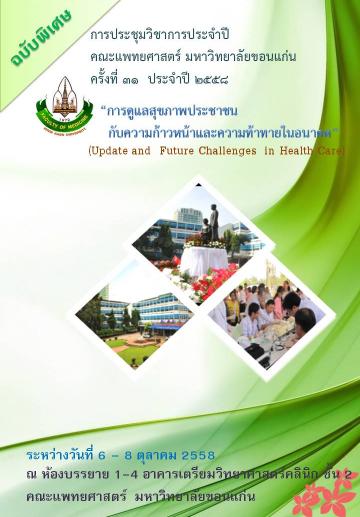Effectiveness of Pulsed Fluoroscopy in Reducing Radiation Dose: A Phantom Study
คำสำคัญ:
transcatheter chemoembolization, fluoroscopic pulse rate, pulse fluoroscopy, radiation doseบทคัดย่อ
Background and objective: Fluoroscopy is a medical imaging technique that shows a continuous x-ray image on a monitor. The long fluoroscopy time, especially during interventional procedures, may result in local patient doses that cause of radiation risk in patients. Pulsed fluoroscopy is an important tool for radiation dose reduction in fluoroscopic procedures. The aim of this study was to present effectiveness of pulsed fluoroscopy in reducing the total radiation dose.
Methods: Acrylic phantom was used for simulating the patient’s abdomen. A phantom was placed on the couch between the x-ray tube and the solid state dosimeter. Fluoroscopic pulse rate were altered from 3, 7.5, 15, and 30 pulse per second (p/s) and radiated to the dosimeter three times for each fluoroscopic pulse rate. Radiation dose rate and Transcatheter Arterial Chemo-Embolization (TACE) exposure parameters were recorded.
Result: The mean radiation doses rate were 8.5, 18.70, 34.65, and 56.99 mGy/s by using 3, 7.5, 15, and 30 p/s TACE protocol, respectively. The use of 30 p/s provided the highest image quality. There was no significant difference of image quality between using 7.5 and 15 p/s.
Conclusion: The change of pulse fluoroscopy to 7.5 and 15 p/s can reduce the fluoroscopic radiation dose to 68% and 40% with remaining an acceptable image quality. Using the higher pulse fluoroscopy (30 p/s) provides the highest image quality, however, it increases the radiation dose rate. The fluoroscopic pulsing rate of 7.5 and 15 p/s are practical and effective method in reducing operator and patient radiation dose during TACE procedure.




